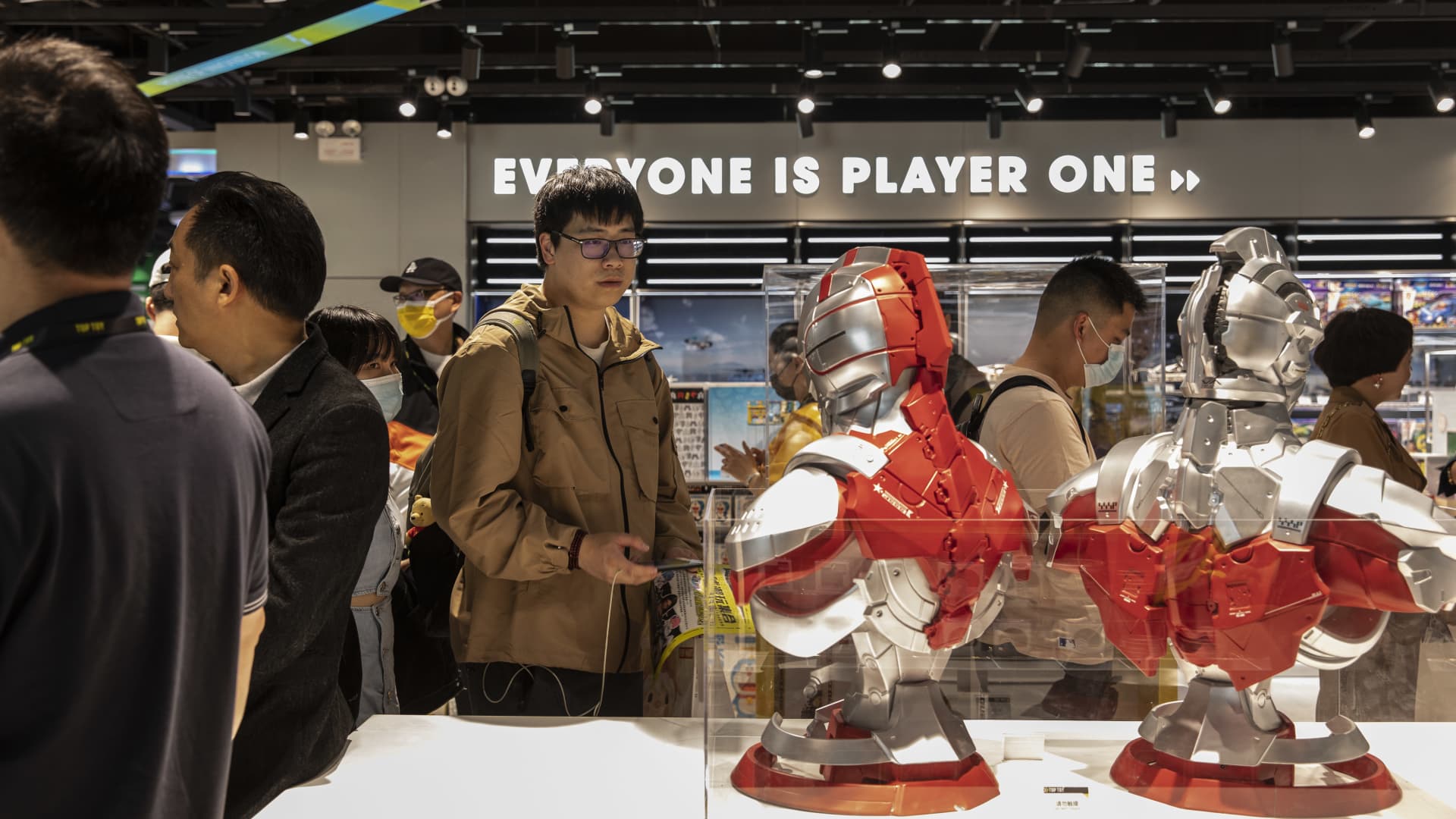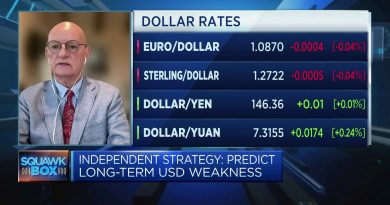Where China’s consumers are spending. Jefferies’ top sector picks for 2024

It’s no secret that most consumers in China haven’t been in a mood to spend big. But what would get them to open their wallets is so far from reality that Jefferies analysts said Wednesday it’s up to companies to find ways to grow on their own. The analysts’ “random check” of consumers in mainland China found people said they’d spend more — if property prices or salaries rose by 20% to 30%. Very unlikely, given that home prices fell in October and the word on the street is more likely to be about layoffs than promotions. Alibaba confirmed Friday it is replacing the December version of its Singles Day shopping event with a promotion that simply translates as “year-end good price festival.” Analysts generally say that for consumers in China today, daily essentials, rather than discretionary goods, are in. So are products perceived to be of high quality. That favors traditional Chinese brands Kweichow Moutai — the famed alcohol company — and Mengniu — a dairy products giant. Top picks Both are on Jefferies’ top picks list for the China consumer in 2024. The analysts forecast 22% upside for Shanghai-traded Moutai from its close on Friday, and 60% in gains ahead for Hong Kong-listed Mengniu. The two companies are so large they’re among the six Chinese businesses that made it into a list of the world’s 50 largest consumer goods suppliers for 2022, according to an annual report from OC & C Strategy Consultants released Wednesday. Nestle, PepsiCo and Procter & Gamble held the top three spots, in descending order. “Chinese spirits player Moutai drove gains in revenue and profits by focusing on direct to consumer,” OC & C said in a release. “They launched a new dedicated app to expand its reach, resulting in direct sales more than doubling in size and accounting for 40% of total revenues.” In addition to being a staple at business dinners in China, Moutai has tried to branch out with co-branding in chocolate, ice cream and coffee. Jefferies’ other top picks to play the China consumer next year include: Miniso , a U.S.-listed retailer of low-cost home goods and toy s, with projected upside of more than 30% from Wednesday’s close. China Pet Foods, a Shenzhen-listed pet food exporter that’s poised to capture a growing domestic market, with forecast upside of more than 20% from Friday’s close. Gongniu, a Shanghai-listed hardware store operator — with “no exposure to property and exports” — and predicted upside of about 30% from Friday’s close. It’s generally been a tough year for domestic and international brands alike in China, despite some market share gains by homegrown brands, which are often lower-cost. P & G management said in an earnings call in October the total market volume for China — it’s largest market outside North America — has been “down over the past few quarters between 7% and 9%,” according to a FactSet transcript. But the company said it expected the Chinese market to “to return to mid single-digit growth” in coming periods. P & G and many analysts are quick to point out the longer-term growth potential of China’s hundreds of millions of new middle class households. “China’s consumer sector is staged for a steady uptrend trend with compelling demographics from the middle-income earners. People have more money and want to spend on things that bring them joy,” said Andy Mantel, a longtime investor in China and CEO of Hong Kong-based Pacific Sun Advisors. However, he expects Chinese consumer brands’ global expansion will be limited by trade restrictions, while the domestic market is big enough for the companies to grow. On top of slowing growth, it’s increasingly a tough market to crack. The gap between winners and losers is widening, McKinsey’s Daniel Zipser said in a report Friday. The firm analyzed 80 publicly-listed consumer companies with a majority of revenue from mainland China. About 20 of the companies saw double-digit growth in revenue — while about 10 saw double-digit declines, the study found. “Success appears to be linked to innovation in brand launches and business models, and quick, agile responses to changing market and consumer dynamics,” said Zipser, senior partner in Shenzhen for McKinsey and leader of its Asia consumer and retail practice. “Factors such as high-quality products, premium branding, and rapid, insights-driven responses to market changes will continue to be key success indicators,” he said. — CNBC’s Michael Bloom contributed to this report.




